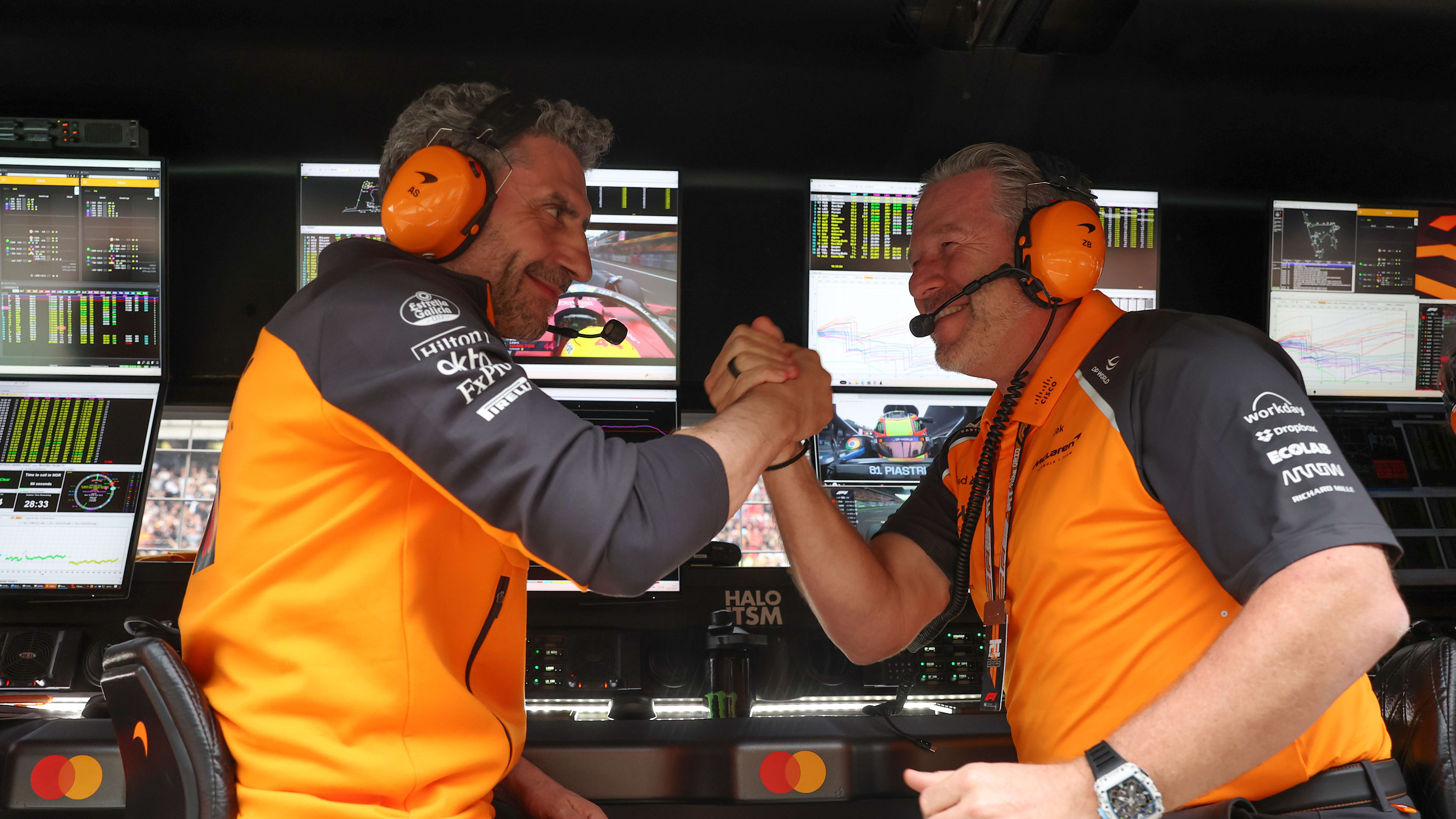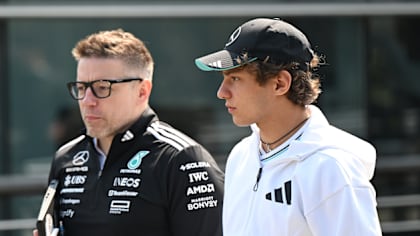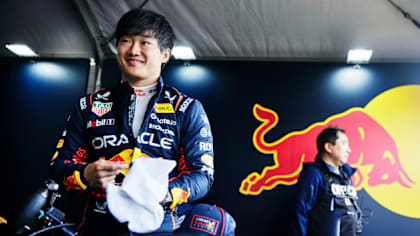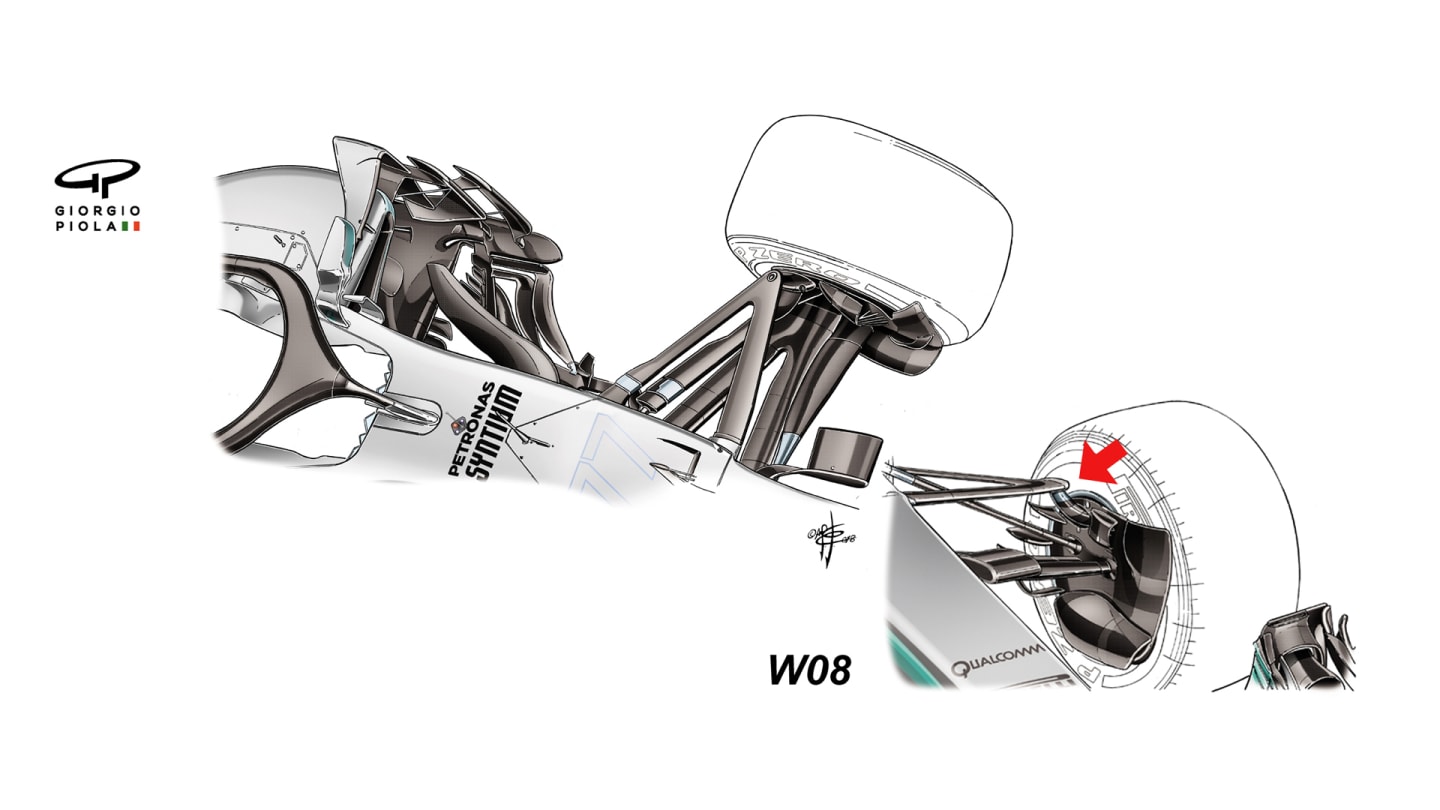
Technical
TECH TUESDAY: Mercedes’ unique, aero-boosting rear suspension

Share

Mercedes designer John Owen described last year's W08 as a “90% car” in the first year of the new wide-track regulations. This year, the Silver Arrows have taken the concepts introduced on that machine and run with them - especially at the rear of the car, where, as Mark Hughes and Giorgio Piola explain, they've made a potentially key step forward...
In F1, where aero is king, suspension systems sometimes seem to be considered as a necessary evil. But that doesn’t mean there is not a huge amount of thought and resource invested in the ultimate trade-off between the mechanical aspects of suspensions and their aerodynamic impact.

The clever front suspension pick-up, first seen on 2017's W08 and replicated on the W09. © Giorgio Piola
Mercedes caught the eye in 2017 with their placement of the front upper wishbone on an extension to the wheel hub to take it above the airflow heading for the radiators and barge boards (see image above). It was a feature (also used by Toro Rosso) that has since been assimilated by Sauber and Williams. However, on their current W09 car Mercedes have gone a step further by incorporating the idea in the rear suspension too.
The circled inset drawing on the right of the image below shows a long titanium extension from the rear wheel hub to meet up with the outboard end of the upper wishbone, raising its height well above the top of the wheel hub. This gives the airflow travelling from the sidepods to the critical gap between the rear tyre and diffuser a much clearer path than would a conventional system. In the middle of the image below, you can see how the wheel hub extension is effectively camouflaged by a carbon fibre, aerodynamically profiled sheath. This same component can be seen from the rear in the inset drawing on the left.
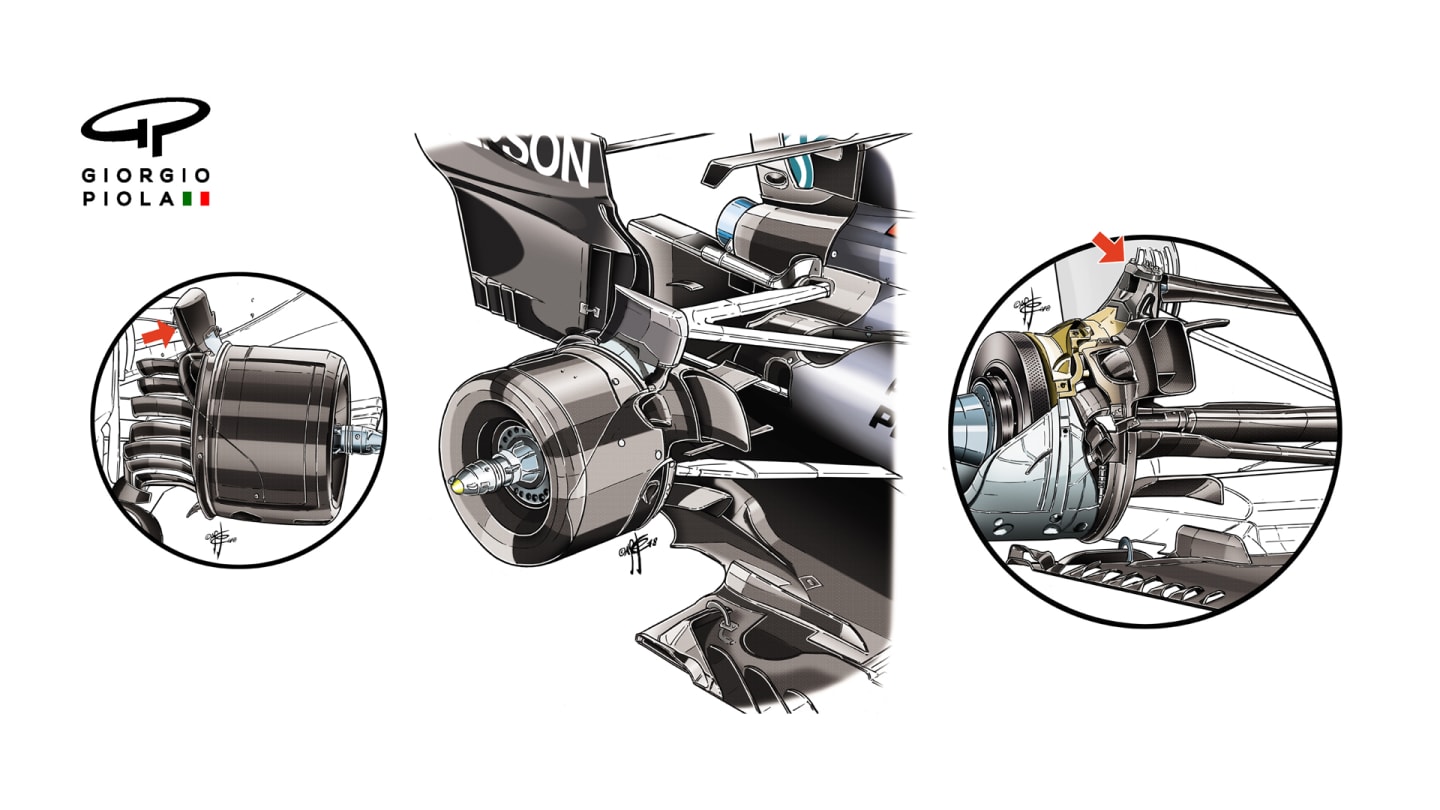
Mercedes have used a similar pick-up idea on their rear suspension in 2018. © Giorgio Piola
Make no mistake: The gap between the inner edge of the rear tyre and the outer wall of the diffuser is aerodynamically highly potent. The faster the air can be induced to flow between that gap, the greater its draw is on the underfloor flow as the two flows merge aft of the diffuser. Mounting the upper wishbone as high as Mercedes have done here clears the airflow’s path as it makes its way to that crucial gap - and that means more downforce.
Aerodynamically, the suspension layout works in conjunction with the sidepod geometry – just as at the front. The Mercedes sidepod shape is such that it does not have as steep a downward slope at the rear as, for example, the Red Bull. Consequently, there is more benefit to be gained by clearing a space by moving the top wishbone clear than on the Red Bull RB14, where the sidepod’s sharp downward slope ensures a conventionally sited upper wishbone does not really form a critical obstruction. It illustrates once again how individual design details are invariably part of an overall philosophy.
The video below shows how it all fits together.
Feeding into this equation will be the architecture and cooling requirements of the power unit. The Mercedes unit, with its split turbo, has the compressor at the front of the engine, requiring that the V6 is mounted slightly further back within the car than with the conventional ‘combined turbine/compressor at the back’ layout of the Ferrari and Renault engines. This will alter the optimum positional relationship of rear axle and sidepod and will have been a contributory factor in the heightened wishbone layout finding significant performance on the Mercedes.
In mechanical terms, reducing the angle of the wishbone from inboard to outboard (by mounting it higher at the outboard) will reduce the roll centre height of the rear suspension. This would potentially bring benefits too, although that’s a complex equation tied in also with the front suspension, the car’s centre of gravity and its aerodynamic centre of pressure. Everything else being equal, it could also make softer springing more feasible, something that would aid traction and tyre degradation.
This is clever stuff from Mercedes. The question is, will this design help give the Silver Arrows the edge in 2018?
YOU MIGHT ALSO LIKE
News Saudi Arabian Grand Prix to host unmissable entertainment line-up
News Michael Schumacher’s Monaco Grand Prix and double title-winning Ferrari F2001 to be sold at auction
News ‘I feel really lucky’ – Antonelli expands on what it’s like working with race engineer ‘Bono’
Feature ‘It can’t get crazier than this’ – Tsunoda on his Red Bull promotion, new team mate Verstappen and the ‘complete unknown’ he faces at Suzuka
